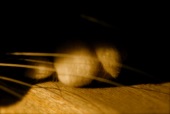Machu Picchu and
The Sacred Valley

Machu Picchu and
The Sacred Valley
One fine day, a patron offered to finance a trip to one of five places that he knew I would like to go and document. I chose Machu Picchu and the Sacred Valley.
All Images Copyrighted Caroline Davies © 2010
Copy from an article I wrote for the RIBA-USA web site magazine. You can find other contributions from me on the top right hand corner of the riba-usa web page.
http://riba-usa.org/Lifestyle/02-Master%20Builders/Master%20builders.htm
Master Builders of the Past
Machu Picchu
High in the Andes Mountains, nestled on steep slopes, exposed to the erosional forces of torrential rain and earthquakes, a venerable architectural marvel, Machu Picchu demonstrates that builders from ancient cultures understood sound engineering and construction in ways we marvel at today. The Incas also built with an indelible sense of respect toward nature which was considered a living being, Pachamama, without whom we could not exist.
The history of Machu Picchu and its architects is elusive. Even if we accept the most commonly held theory about the builders of this white granite monument; constructed in the early 15th century by the Inca Pachacutec, the fact that this breathtaking city has endured centuries of exposure to harsh elements is indeed a testament to the knowledge these builders had. Over the given five centuries or more,
Machu Picchu has withstood severe environmental conditions, and yet still stands solidly in its secretive
silence.
Inca architects and engineers understood prevention of land erosion and constructed a well held sustainable city. Terraces were built with very strong retaining walls that would endure heavy rainfall and prevent valuable top soil from washing away. This was achieved by proper land sloping to manage the water flow without causing problems with mud. The Incas used larger stones for foundations, gradually decreasing their size which worked well for drainage. They used different types of soil collected from various locations in the surrounding Sacred Valley to ensure proper acid/alkaline balance to achieve the best crop yield possible, as well as arranging the terraces to receive maximum sunlight. Underground aqua systems, traveling through difficult terrain and long distances from the higher neighboring snow packed mountains, ensured a year round fresh water supply.
The expert artistry of the Inca masonry is quite extraordinary. There are smoothly formed convex and concave surfaces and the careful fitting of stones, often of a cyclopean size, without mortar. Different finishes were applied to different kinds of buildings. Temples were given the most attention, with larger stones and smoother finishes, whilst the construction of homes used smaller stones, left with a rougher hue, but still built with the same durable result.
Machu Picchu should be considered a destination, not a two hour stop over on a day trip from Cusco. The Sanctuary of Machu Picchu is breathtaking! There is a palpable uplifting energy in this area which should be soaked up and savored. You will not want to leave quickly.
The Machu Picchu Pueblo Hotel is a great place to stay, it is set in 15 acres of lush Andean forest, interspersed with gentle streams and waterfalls, which hosts 372 species of orchids, 16 different species of hummingbirds, 162 bird species and 108 species of butterflies. This peaceful place is excellent to absorb the Spirit of the Andes Mountains, and to perhaps garner an understanding of the Inca’s regard for the power of the spirit of Mother-Nature.
Text and Photographs, Caroline Davies
Editor, Lifestyle and Culture

